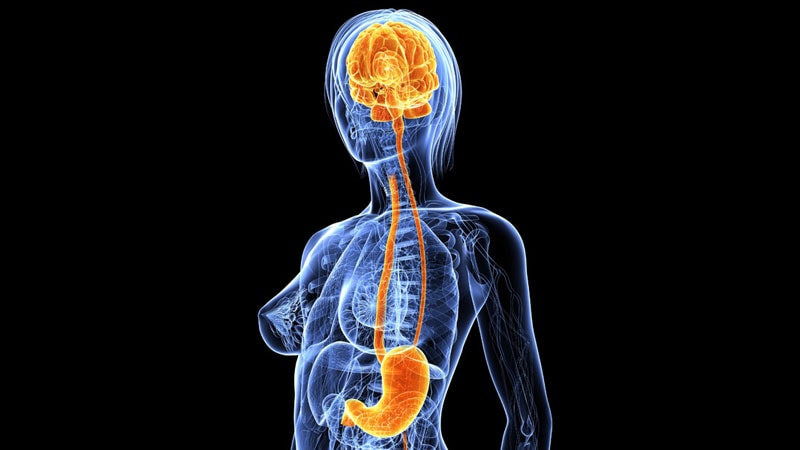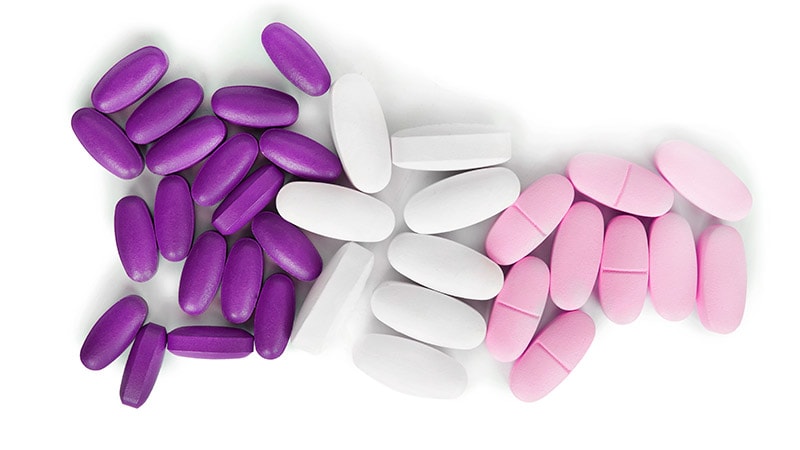Please note that the text below is not a full transcript and has not been copyedited. For more insight and commentary on these stories, subscribe to the This Week in Cardiology podcast, download the Medscape app or subscribe on Apple Podcasts, Spotify, or your preferred podcast provider. This podcast is intended for healthcare professionals only.
In This Week’s Podcast
For the week ending April 19, 2024, John Mandrola, MD, comments on the following news and features stories: American College of Cardiology (ACC) recap part 2: TACT2 trial of chelation, intra-atrial shunts for HF — the RELIEVE HF trial — and triglyceride lowering. Plus diltiazem and Factor Xa anticoagulants.
TACT2
Let’s start with a trial that teaches a vital lesson in critical appraisal and scientific skepticism. I lead with this trial for an important reason.
TACT2 studied chelation of heavy metals as a treatment for atherosclerotic cardiovascular disease (ASCVD) in patients with diabetes.
Chelation? I know. It’s not standard medicine. It’s alternative medicine. But hear me out.
In 2013, Gervasio Lamas, an established cardiac researcher, announced and published in JAMA, the results of TACT, a trial that stunned the cardiology community.
TACT was a double-blind, placebo-controlled trial of 1700 patients who’d had a myocardial infarction (MI).
Patients were randomly assigned in a 2 x 2 design to receive 40 infusions of chelation solution or placebo plus an oral vitamin regimen or placebo.
The primary endpoint (a composite of death, MI, stroke, coronary revascularization, or hospitalization for angina) occurred in 26% of the chelation group vs 30% of the placebo group. The hazard ratio (HR) was 0.82 and confidence interval (CI) 0.69-0.99. It was a positive trial.
In a subgroup analysis, published in a separate paper in Circulation Outcomes, patients with diabetes had a much larger reduction in the composite endpoint, including even a death reduction. The HR in patients with diabetes was a whopping 0.59 and CI was 0.44-0.79 over 5 years.
Because this was one of many subgroups analyzed, the authors did a Bonferroni adjustment and it still remained positive. The adjusted risk reduction (ARR) was impressive at 13%. The number needed to treat was 6.5. No effect of chelation was seen in non-diabetes patients.
At the time, TACT created a huge stir. JAMA editors wrote an explanatory letter and published a Steve Nissen editorial expressing great doubt. The big arguments were that a) there were no obvious reasons chelation would work, and b) lots of patients were recruited at chelation centers, and chelaters were not standard MDs.
I can’t recall exactly what Lamas told me back then, but it was something like, I am not sure, but this is an important signal. Not only might chelation be an important way to treat vascular disease, but it could also implicate a new causal mechanism of atherosclerosis, that is, heavy metals.
So, Lamas did science the way it is supposed to be done. He sought to confirm this data in another trial.
TACT2 received National Institutes of Health funding and targeted the subgroup of patients with diabetes that had the largest signal of benefit. It was a massive effort.
He presented TACT2 at ACC.
TACT2 randomly assigned 1000 patients who had MI and diabetes; chelation vs placebo with vitamins vs placebo. Same plan. Same major adverse cardiac event (MACE) endpoint, plus a metals level endpoint.
After 2.5 years, there was no significant effect. HR 0.93 (CI 0.76-1.116). There was no difference in death and no subgroup signals. EDTA-based chelation lowered blood lead levels by about 60%.
He offered a slide with a possible explanation: Lead levels have declined. In an National Health and Nutrition Examination Survey study, lead levels were 17 mcg/L back in the early 2000s. Now levels are about 11 mcg/dl.
This is a plausible explanation. We’ve seen it with beta-blockers after MI, and implanted cardioverter-defibrillators in heart failure (HF). As the disease changes — for the better — so does the treatment effect.
I would offer an alternative explanation, one that I think is as important as any concept I have discussed on this podcast.
My explanation centers on a paper by Erik Van Zwet published in NEJM Evidence a few months ago.
Van Zwet is a statistics professor in Leiden, the Netherlands. He and a bunch of other statisticians analyzed, sit down for this, 23,000 randomized controlled trials (RCTs) in the Cochrane database. They were interested in studying, a) the degree of over-estimation in trials, b) the probability that the estimated effect is in the same direction of the true effect, and c) the predictive power of a trial to replicate with another significant P of ≤ 0.05.
They conducted a fairly complicated analysis looking at the z-statistics of the trials and their signal to noise ratio. I won’t get into the details, but they found that most trials have extremely low power —below 25%. Most trials overestimate the confidence in the results and even highly significant trials have a low probability of replicating as significant.
The first sentence in their discussion reads that an initial P value between 0.001 and 0.005 in a trial implies only a 58% chance of getting P < 0.05 upon attempted replication. It’s even more unreliable in the stratum of P-values of 0.01-0.05 — only 37%.
My thesis therefore is that the original TACT produced a positive result that was likely spurious.
This notion is important. We hear so often about positive trials that have P-values around the level of significance and are told these are positive.
But this analysis suggests that a single trial usually has low power and even when significant, or with a P = 0.06, we should have a lot less confidence than we do.
PARAGON HF of sacubitril/valsartan vs valsartan in HF with preserved ejection fraction (HFpEF) comes to mind. Here, the 13% reduction in CV death or hospitalizations for HF (HHF)came with a CI of 0.75-1.01 and P-value of 0.06.
At the US Food and Drug Administration (FDA) there were many different analyses — in women, in those with HF with slightly reduced EF, as well as analyses that separated investigator-reported events vs clinical event committee adjudication event.
Every time we see a study with broad CI and marginal P-values, such as TACT, we should remember the lesson of TACT2. That is, that most trials are underpowered, many effect size estimates are overestimates, and if replication trials were the norm, many of these results would not replicate.
Not because of shenanigans, but because trials necessarily recruit the smallest number of patients necessary and are often under-powered to sort signal from noise.
Hence, be skeptical and conservative in what you accept as beneficial.
Interatrial Shunts for HF – RELIEVE HF Trial
In HF, dyspnea related to pulmonary vascular congestion occurs because left atrial (LA) pressure is high.
The idea is thus: we can place an inter-atrial shunt to shunt blood from the high-pressure LA to the lower pressure right atrium (RA). If this were a Goldilocks-like shunt, that is, just the right amount of offloading of LA volume and pressure, but not so much to overload the right ventricle (RV), then you might be able to non-pharmacologically relieve congestion and modify HF outcomes.
A company called V-Wave has such a shunt and in smaller studies has been shown to reduce filling pressures and provide symptom relief to patients with HF with reduced EF (HFrEF) and HFpEF.
Recall that another company’s atrial shunt failed to improve outcomes in a sham-controlled trial called REDUCE LAP HF II trial. In Lancet, in 2022, that atrial shunt device failed to reduce HF events or improve quality of life (QOL) in patients with HF and an EF > 40%.
RELIEVE HF recruited patients with any kind of HF. This was a proper sham-controlled trial.
The primary endpoint was a composite of death, left ventricular assist device (LVAD) or transplant, all HHF, outpatient worsening HF events, and change in Kansas City Cardiomyopathy questionnaire (KCCQ). This was analyzed with a win-ratio, which counts death and HF events as more important than QOL. There was also a safety endpoint — as appropriate because putting a foreign body in the LA and RA is no small thing.
About 250 patients were in each arm: shunt vs placebo procedure.
The safety endpoints were great. Zero percent of the shunt arm had a safety issue in the month after the procedure.
But the efficacy endpoint — even considering the sort of soft win-ratio of multiple outcomes — was not significant.
Win ratio = 0.89 (HR 0.72 to 1.09). A secondary endpoint of cardiac events minus the KCCQ was also null (HR 1.00). Kaplan Meier curves were the same.
Deaths were 15.7% in the shunt arm and 13.7% in the placebo arm. Wide confidence intervals for this 31% higher rate of death, so we can’t conclude anything. But still.
KCCQ change was also totally the same. Interesting, however, was that both groups bumped up 10 points after either procedure, indicating in super-clear terms the need for a placebo procedure; yes, I am talking to you, TRILUMINATE trialists.
But this is not the end of the story. Oh no it is not!
Dr Gregg Stone did not disappoint. In the next slides, he presented the subgroup analysis dichotomized by LVEF ≤ 40% and LVEF > 40%. This was a whopper.
About 40% of enrolled pts had a reduced LVEF (≤ 40%) and 60% had LVEF > 40%.In patients with LVEF ≤ 40%, the shunt reduced the secondary composite endpoint of death, LVAD, all HHF, and outpatient HF events by 45%. HR 0.55 (0.42-0.73). But.
In patients with LVEF > 40%, it was a near mirror image. Patients in the shunt arm had 68% higher rate of the composite HF endpoint (HR 1.68; CI 1.3-2.2).
Both P-values were highly significant.
All the components of the endpoint went in this direction: the shunt was better in low EF and harmful in those with EF better than 40%.
Here's the thing though — the KCCQ endpoint measuring change in QOL was the same in either EF subgroup.
Comments. Wow. As a student of heterogenous treatment effects, I am intrigued. There is not yet a paper on this, just slides and a presentation, but what should we think?
On the one hand, the overall trial results are null, even using the win-ratio. Trials are powered for overall results so these should get the most weight.
Plus, as priors, we ought to be pessimistic, because a) we have super good therapies for HF already, b) a foreign body is unlikely to work (see also the negative PREVAIL trial of Watchman), and c) the REDUCE LAP HF II trial of a similar device failed.
So, if you combine negative priors with a null result, the likelihood is that we should not be too excited about this strategy.
On the other hand, the dramatic subgroup finding of benefit in HFrEF and harm in HFpEF has two plausible explanations.
First, physiologically, it is possible that patients with HFpEF, who often have co-existing pulmonary hypertension, are more sensitive to higher flow in the RA and RV.
Second, is the statistics. If the effect size in the main trial is null, and you posit benefit in one large subgroup, you ought to have harm in another subgroup. Here we have 40% getting a benefit and 60% getting harm. That sort of fits.
You all know what the next step is. It is not to approve the device for patients with HFrEF. It is to do another study of just patients with HFrEF who look like patients with HFrEF in the original RELIEVE HF trial.
Remember what I just said about significant P-values. There is still a chance that this will not replicate. And the left atrial appendage occlusion story of widespread acceptance of a foreign body in the heart, despite a negative regulatory trial, should teach us a lesson about proving efficacy before approval.
I say congrats to Dr Stone and colleagues and I look forward to the RELIEVE HF 2 trial of the inter-atrial shunt in patients with HF due to a reduced EF only.
Triglyceride Lowering
At ACC, during a late-breaker, we heard results of a phase 2 trial of a drug to reduce triglycerides (TG).
The drug is called olezarsen. It is an antisense oligonucleotide targeting messenger RNA for apolipoprotein C-III (APOC3).
All I will tell you is that it worked. It lowered TG levels. The study made it into the NEJM with 154 patients. There was a dose-response relationship, and there were no adverse effects.
This is mile 2 of a marathon. A drug that lowers a lipid level is not enough in this era. You need a big outcomes trial that shows it reduces cardiac events, on top of standard statin therapy.
Statins reduce cardiac outcomes by 20% to 25%. That’s a high bar. In fact, all new lipid lowering therapies have a high bar.
What’s more, I have grown increasingly suspect of phase 2 trials. Recall that phase 2 trials are usually dose-finding studies. What clinicians mostly deal with are big phase 3 clinical trials.
The reason I have been increasingly worried about hype surrounding phase 2 trials is the Factor XI anticoagulant asundexian story. Multiple phase 2 trials came out showing less bleeding. Everyone was talking Factor XI inhibitors. The ideal anticoagulant, I heard from the key opinion leaders.
We were recruiting for the OCEANIC AF phase 3 clinical trial. With great success because it was asundexian vs apixaban and it was a way for people to get free anticoagulants (ACs).
Then, BOOM, in less than a year the trial was stopped due to inefficacy of stroke prevention.
So, please, let’s put these phase 2 trials in poster form and let them be on the big stage when the phase 3 study shows that they actually help people.
By the way, there was another phase 2 trial, a late-breaker on a triglyceride lowering agent called plozasiran, an investigational APOC3-targeted small interfering–RNA.
And it too, lowered TG levels. The SHASTA-2 trial enrolled about 230 patients and included patients with severely high TG levels. The drug worked to lower TG levels.
Let’s see how miles 3 to 26 go here as well.
Diltiazem and DOACs
This is one non-ACC study that intrigued me this week. If you care for patients with atrial fibrillation (AF), an observational study in JAMA deserves your attention. First some background.
It’s an everyday thing. A patient with AF who is taking apixaban is prescribed diltiazem for rate control. It’s as normal as rain in Kentucky. No one notices.
Another normality in my world of private practice cardiology: You almost never hear a clinician speak about drug metabolism or pharmacology.
Yet, I am sure most listeners have stored in their brains the basic fact that plasma levels of the Factor Xa inhibitors apixaban and rivaroxaban are influenced by hepatic cytochrome P450-3A4 (CYP3A4) enzymes. These enzymes promote metabolism and then elimination of the drugs.
Another fact stored in your brain — perhaps from training many years ago — is that the calcium channel blocker diltiazem, is a strong inhibitor of CYP3A4. Which means it can produce an up to 4 time increase in the plasma concentration of drugs metabolized by CYP3A4. Diltiazem also weakly inhibits P-glycoprotein- mediated metabolism.
Thus: Coadministration of diltiazem with apixaban increased the AUC for apixaban by 40%. Since bleeding rates from these anticoagulants correlate with plasma levels, you can see the problem. Diltiazem and Factor Xa inhibitors could increase bleeding.
Guidelines, it turns out, are good about telling us to use expensive devices and drugs, but not so specific about drug-drug interactions. They say clinicians should “consider drug-drug interactions” but do not mention any specific interactions.
A Vanderbilt University-led team, first author Wayne Ray, performed a retrospective cohort study using Medicare data. JAMA published the study, which included more than 204,000 AF patients taking either rivaroxaban or apixaban, in which about one-quarter (≈ 53,000) received diltiazem, and three-quarters (≈150,000) received metoprolol.
The primary endpoint was a composite of bleeding related hospitalization and death with evidence of bleeding.
In essence, this was a non-random comparison study of bleeding rates with the two rate-controlling meds. One med (diltiazem) raises direct acting oral AC (DOAC) levels, the other (metoprolol) does not.
The main result was that patients taking diltiazem along with their DOAC had an increased rate of the primary outcome of bleeding. The risk difference was about 10 per 1000 patient-years; HR 1.21 (CI 1.13-1.29), so a 22% increased risk.
Another important finding was a dose-response association. The risk for the bleeding primary outcome was higher when diltiazem doses exceeded 120mg/day compared with lower doses (risk difference 15 per 1000 patient years vs 7 per 1000 patients in the lower dose).
One more finding: There were no significant differences in the risk for ischemic stroke. Thrombotic events did not seem to trend the same way bleeding did.
Comments. Higher bleeding rates with co-administration of diltiazem and Factor Xa inhibitors is an important observation. The authors list many previous papers that also looked at this relationship. Most find an increased bleeding risk, but some do not. Most of these previous studies were smaller or had less robust methods.
The RCTs of these drugs had many fewer patients. For example, in ARISTOTLE, about 2700 patients were in each arm on diltiazem. It’s hard to sort out much signal there. Plus, these were ideal patients.
So, large database studies like this have big numbers and real-world representation as strengths. There is also a plausible pharmacologic reason for the increased bleeding rate when the drugs are co-prescribed.
Regular listeners know that I always speak of the possibility of confounding variables and selection bias in studies where a clinician chooses one or the other treatment rather than using randomization. And that is also possible here. Maybe there was something about diltiazem-treated patients that made them more susceptible to bleeding.
But I am racking my brain trying to think of a confounding factor that could cause diltiazem-treated patients to have a higher risk of bleeding vs metoprolol-treated patients. And I can’t seem to think of one. Maybe you can.
For example, in many of these types of nonrandom comparison studies, sicker patients get one treatment, say digoxin, and that is why they do worse, but here, the choice of metoprolol vs diltiazem I think is largely just a habit. Some doctors use diltiazem and some use beta-blockers.
What’s more the authors did sensitivity analysis which helps to exclude some confounding.
Thus, I think it’s real. I am a pharmacologic worry wort. I think about drug-drug interactions and CYP3A4 and P-glycoprotein.
The problem of course is that I am also increasingly negative on beta-blockers for many indications, such as post MI and perhaps in HFpEF. I have been increasingly using non-beta-blocker means to control AF rate.
This study should make us think about bleeding rates with co-administration of diltiazem and Factor Xa inhibitors.
Yet we should also be clear that the differences were small. The relative risk was impressive at ≈ 20% but the absolute risk increase was in the range of only 1%. So, we don’t have to be paralyzed. But in high-bleeding risk patients, we might choose a beta-blocker, or gulp, digoxin for rate control.
Let me know what you think.

.webp) 2 weeks ago
12
2 weeks ago
12

























 English (US)
English (US)